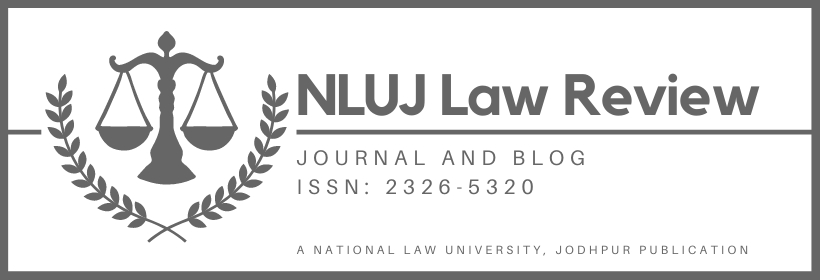Introduction
The word “property” is not specifically articulated in the Transfer of Property Act, 1882 [“TPA”]. Nonetheless, property can be anything tangible or intangible over which an individual can exercise some right. Essentially, rights are the legal interests that are recognised and safeguarded by courts. These interests might take many forms. An individual may have a vested interest, a contingent interest, or a life interest in a property. But only the property’s owner or another individual who the owner has expressly authorised to transfer the property on his behalf can transfer it to another person. The TPA regulates all transfers of this kind. Periodically, the individual who seems to possess the property is referred to as the ostensible owner.[i] He is an individual who has all of the characteristics of ownership except the actual ownership.[ii] However, this does not indicate that he is inhabiting the land illegally, as the true owner is aware of this conduct.
Section 41 of the Act regulates transfers made by such ostensible owners. The section’s language regarding property transfers is as follows – “where with consent, express or implied, of the persons interested in immovable property and transfers the same for consideration, the transfer shall not be voidable on the ground that the transferor was not authorised to make it; provided that the transferee, after taking reasonable care to ascertain the transferor had power to make the transfer, has acted in good faith.” To make this section applicable, a number of pre-established principles must be adhered to. The section’s background demonstrates that it is a legislative application of the concepts outlined in Ram Coomar v. McQueen.[iii]The judgment of the Privy Council in this landmark case will be discussed in detail in the next part of the article.
The Benami Transactions (Prohibition) Amendment Act 2016 incorporated measures that prima facie appear to go against the objective of Section 41. To address this issue, this article will conduct a comprehensive examination of Section 41. The section’s evolution will be followed by reviewing English cases and subsequently by discussing all pertinent case laws in current Indian jurisprudence. Afterwards, the author analyses Section 43 of the TPA and contrasts it with Section 41. The author will examine key aspects of the Benami Transactions (Prohibition) Amendment Act 2016, which attempted to rein in the spread of black money by forbidding a certain form of transaction that seems to be analogous to the one contemplated in section 41. The author contends, however, that given the interpretation given to the Benami Transactions Act by the courts, the provisions of both the statutes can coexist in the Indian legal jurisprudence.
Who Can Be Called An Ostensible Owner?
An ostensible owner is described as an ‘apparent owner’; somebody who is not the actual owner of a property but is granted the authority (impliedly or expressly) to interact with third parties as the true owner. [iv] This doctrine was initially developed with the overarching notion of justice and equity in consideration, by providing legal recourse to an unsuspecting third party. As previously noted, the doctrine is largely based on Ramcoomar v. Macqueen. In this case, the property owner permitted the ostensible owner to portray himself as the title holder and transferred the property to someone else in accordance with Section 41 of the Act. The Privy Council dismissed the plaintiffs’ claim that since the respondent was not the actual owner, he should be entitled to recover on the title. It held that whenever an individual permits someone to portray himself as the proprietor of an estate, a third party acquiring it under such an ostensible perception will not be accountable for relinquishing the ownership later.
The Privy Council also added a proviso to the idea of ostensible ownership, stating that the buyer should not be aware of the actual owner and that no conditions occurred that would have prompted a rational person to inquire about the property’s ownership. Therefore, the theory seeks to safeguard a prudent third party who acquired the property from the ostensible owner. This characterization resembles the English law of estoppel, which states that if someone, either through words or conduct, induces someone to act a certain way or consent to a certain act, he is estopped from going back on that implication. The principle of estoppel works against the real owner of the property by holding that the real owner consented to the representations made by the ostensible owner to a third party. Consequentially, the transfer made by the ostensible owner is held to be valid.
It can conclusively be said that an ostensible owner is someone who holds out himself to be the real owner of the property. Whether he holds himself to be the ostensible owner with the consent of the real owner is a question of fact depending upon the circumstances of each case. The Indian courts have reaffirmed this construction of Section 41 of the Act in several other judgments over the decades. In Niras Purve v. Tetri Pasin,[v]the husband made mutations in her spouse’s favour and embarked on a pilgrimage. As the ostensible owner, the wife transferred the property to someone else. When the husband returned, he attempted to reclaim the property. However, the court determined that his wife was the ostensible owner and dismissed his claim. In Ratan Sen v. Suraj Bhan,[vi] the court determined that ostensible ownership is a form of estoppel. Thus, the theory deviates from the legal maxim Nemo dat qua non habet.This exemption is explained by the equitable law of estoppel, which provides that a title owner cannot reverse his mind after the transaction has been completed, resulting in legal complications and inconvenience for the unwitting third party.
Essential Conditions of Section 41
It can be inferred that four critical premises must be met in order for Section 41 of the Act to take effect. First, there should be some consideration involved in the transfer, thereby meaning that the section is inapplicable to gratuitous gifts. Second, the ostensible owner must have the implicit or express permission of the real owner to lawfully present oneself as the title holder. If the real owner is a minor or has a mental illness, his permission cannot trigger Section 41 of the Act. Additionally, kartas, guardians of minor’s property and managers are not considered ostensible owners.[vii] Third, the transferee should have bought the property in good faith.[viii] The transferee should genuinely believe that the transferor is the actual owner of the property and, therefore, not an ostensible owner. If the transferee does not have this legitimate perception, there is a possibility of collusion between the buyer and the transferor, and the transaction will not be subject to Section 41 of the Act.[ix] Fourthly, the transferee should have exercised “reasonable care” in purchasing the property from the ostensible owner.[x] This is an implementation of the broad caveat emptor concept, which applies to all property transfers on a fundamental level. There is no universal level of care that can be considered to have been exercised, and the facts behind the transaction primarily determine the level of care.[xi] The inquiry conducted by the transferee has to be thorough, not cursory, so if the transferee is unable to determine the real character of the ostensible owner despite such an investigation, he is shielded by Section 41 of the Act.
Comparative Analysis Of Section 41 And Section 43
As per Section 43 of the Transfer of Property Act, “Where a person fraudulently or erroneously represents that he is authorised to transfer certain immovable property and professes to transfer such property for consideration, such transfer shall, at the option of the transferee, operate on any interest which the transferor may acquire in such property at any time during which the contract of transfer. Nothing in this section shall impair the right of transferees in good faith for consideration without notice of the existence of the said option.”
While sections 41 and 43 seem to be comparable at first, they are substantially different. Under Section 41, the transferee conducts an inquiry on his own; however, under Section 43, the transferee considers the transferor’s assertion to be true and is not required to conduct a separate inquiry himself. Furthermore, in Section 43, the property transfer has not yet occurred, in contrast to Section 41, wherein the transfer has been completed. Additionally, it is to be noted that the transferor does not really own the property transferred under Section 41, i.e., he is the ostensible owner. On the other hand, the property must become the transferor’s property in part or in whole in order to be transferred under Section 43.
Moreover, the transferee should be unaware of the presence of the title of the real owner under Section 41, whilst under Section 43, the second transferee should be unaware of the existence of the option in the first transferee’s favor. Interestingly, both sections block the actual owner from transacting, the former by permitting the ostensible owner to deal and the latter by acquiring the property. Consequently, it can be implied that the estoppel operates against the actual owner under Section 41, whereas under Section 43, the estoppel operates against the subsequent transferor.
The Benami Transactions (Prohibition) Amendment Act, 2016
The Benami Transactions (Prohibition) Act of 1988 [“Benami Act”] was instituted to constrain the entry of illicit funds into the system. It sought to counter the rising tendency of black money being channelled via real estate in order to change it to white money. This had been accomplished by having another person pose as the property holder, preventing the black money possessor from becoming the title holder on paperwork. The statute calls a Benami transfer “any transaction in which property is transferred to one person for a consideration paid or provided by another person.” The Act was revised in 2016 to include measures that primarily appear to contradict the aim of Section 41 of the Transfer of Property Act. These entail defining transfers as Benami when the transferee is unaware of the title holder’s original identity or when the payment supplied for the transfer is not readily traceable. The real owner is completely prohibited from enforcing his rights of ownership against the Benami owner. This was embodied in Syed Abdul Khader v. Rami Reddy, wherein it was determined that a Benami transaction is one in which the real title holder’s ownership is not shown on paperwork. Thus, a Benami transaction is not a fraudulent one; it is carried out only for the sake of obtaining the proper documentation.
Whether An Ostensible Owner Is A Benamdar?
An ostensible owner is distinguishable from a benamdar. An ostensible owner is someone who seems to have complete ownership of the property being transferred. That is, he has title paperwork and other documentation establishing his ownership of the land.[xii] However, a benamdar is only a “name-lender”, and absolute power resides with the party who gives the payment.[xiii] Thus, all benamdars are a subset of ostensible owners (without the advantage of Section 41), with the critical distinction being the motive of the person paying the money for the transfer. However, an ostensible owner isn’t always a benamdar. Resultantly, Benami transactions can be grouped into two types: first, when an individual purchases a property and provides consideration in the name of another individual without intending to benefit him. Therefore, a transfer would occur in this case. Second, when the transferor retains ownership of the property. In this instance, there is no operational transfer.
Criteria for Determination
The Apex court’s judgement in Jayadayal Poddar v. Bibi Hazra outlined the essential features of a Benami transaction – notably, “the source of the purchase money, the relationship of the parties, the conduct of the parties, the manner in which the property has been dealt with following its sale, custody of title deeds, and most importantly, the intention to conduct a benami transaction.”[xiv] The intention of the parties is a significant determinant of a Benami transaction, and the onus is on the party asserting that the transfer is Benami to substantiate these characteristics.[xv]
The distinction between ostensible ownership and Benami transactions is mainly based on intention. It is regarded as a Benami transaction if there is an intention to perform one in line with the Benami Act. Whenever confronted with this kind of property transfer, the judges inquire about why the property was bought in the name of some other individual and if the actual and ostensible owners had a pre-existing connection or are total strangers to each other.
Limitation of Section 41’s Ambit Through The Benami Act
As discussed earlier, the Benami Act was enacted to deter black money from being whitewashed, thereby minimising tax evasion. Under this statute, this kind of transfer is now punishable by up to 3 years in jail, which effectively nullifies the property transactions. The burden of evidence is on the party claiming the Benami transaction, and if the consideration originated with another party, it is considered that the individual is a benamdar. This presumption is overturned only if the property was acquired in the name of the spouse or unmarried daughter. The Benami Act also extends to Section 41 of the TPA confining its scope by penalising a range of ostensible ownership arrangements.
Fundamentally, a banned Benami transaction is when the ostensible owner (benamdar) gives his name to the title documents while the actual owner is the party paying the price. The Benami Act provides that no transfer between the actual owner and the benamdar can be made after it has been established that the entire transaction was Benami. As a result, the ostensible owner now becomes the real owner. This serves to discourage money laundering through a proxy since the proxy will be unable to transfer the ownership. This confines Section 41 since it restricts the extent to which an ostensible owner may transfer property to the actual owner.
The transferee who obtains property via a benamdar cannot benefit from Section 41 except if the ostensible owner is related to the actual owner as specified in the Benami Act. These instances include those in which the ostensible owner is the actual owner’s spouse or single daughter, or is working in a fiduciary position to establish a trust, or is a member of a Hindu Undivided Family, brother, sister, or any lineal ascendant/descendant. Section 41 has regulated these circumstances since they are not included in the scope of Benami transactions.
Conclusion
Section 41 of the Transfer of Property Act has assumed great importance in safeguarding the innocent third party’s interests. While it may appear that this section is titled in favour of the third party, such a scenario typically occurs only when the actual owner is entirely to blame. Additionally, it imposes a responsibility on the third party even during property acquisition to prevent both parties from abusing this provision. Consequently, it also secures the actual owner’s interests.
After analysing the ambit of the terms ‘ostensible owner’ and ‘benamdar’, it can be seen that the Benami Act has drastically narrowed the reach of Section 41 by classifying certain ostensible owners as benamdars. Nonetheless, the author contends that Benami Act has not made Section 41 redundant, and the principles of equality and fairness have been upheld. The judges are cautious not to categorise a purchase as Benami until compelling evidence to the contrary is shown. Although the idea of ostensible ownership is susceptible to the Benami Act’s requirements, the Benami Act protects situations where the rightful owner has the ostensible owner’s best interests at heart, such as a spouse or an unmarried daughter. Resultantly, Section 41 is still applicable in a number of modern-day situations despite the 2016 Amendment to the Benami Act. In conclusion, it can be said that these two acts can coexist in unison in the Indian legal jurisprudence.
[i] Vepa P. Sarathi, Law of Transfer of Property 101 (5th ed., 2005).
[ii] Poonam Pradhan Saxena, Property Law 177 (2nd ed., 2011).
[iii] Ramcoomar Koondoo v. John and Maria McQueen, (1872) 11 Beng. L.R. 46.
[iv] Bryan A. Garner, Black’s Law Dictionary (10th edition, 2018).
[v] Niras Purve v Tetri Pasin, (1916) 20 Cal WN 103.
[vi] Ratan Sen v. Suraj Bhan, AIR 1944 All 1.
[vii] Muhammad Sulaiman v. Sakina Bibi, AIR (1922) All 392.
[viii] Rajbari Bank v. Harshamukhi Sinha, AIR 1947 Cal 154.
[ix] Rai Sunil Kumar v. Thakur Singh, AIR 1984 PAT 80.
[x] Kanhu Lal v Palu Sahu, [1920] 5 Pat LJ 521.
[xi] Beyas Singh v. Ram Janam Ahir, AIR. (1961) Pat 16.
[xii] Fazal Husain v. Muhammad Kazim And Ors, AIR 1934 All 193
[xiii] B.B.Mitra, Transfer of Property Act 236 (18th ed., 2007).
[xiv] Jaya Dalal Poddar v. Bibi Hazra, AIR 1974 SC 171.
[xv] Mahinder Singh v. Pardaman Singh, AIR 1992 Del 357.
This article is authored by Chaitanya Thakur, student at West Bengal National University of Juridical Sciences, Kolkata.



